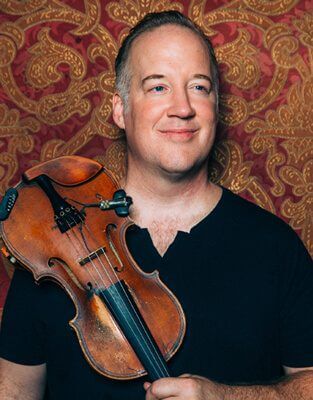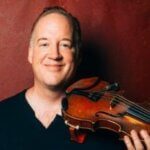UPDATE: You can find a full replay of Dr. Norgaard and myself discussing psychology in performance and improvisation in the Creative Strings Academy. This replay is exclusive to members only!
What happens in the brain during improvisation, and how do we use this to get better at improvising?
This is exactly the thing Dr. Martin Norgaard researched for his doctorate in music education.
Now a professor at Georgia State University, Martin got together with me recently to talk a little about his findings, share approaches to teaching improvisation and jazz violin, and play some tunes. Martin is a thought leader in our niche and one of the coolest guys I have ever met.
Among many things we agree on:
1) Improvisation is easier when you’re working with information you’ve already ingrained.
2) Improvising over unfamiliar musical terrain (including chord progressions, meters, or stylistic frameworks) is nearly impossible, leading quickly to diminishing returns.
These situations correspond with two states of mind:
a) Creative mental state (while playing in familiar musical terrain): In this state of mind, you can train your attention and energy on your imagination, easily architecting melodic lines, rhythms, and gestures like a painter applies color and line to a canvas.
b) “Learning/drilling” mental state (when playing over unfamiliar terrain): In this state, you are creatively paralyzed, until you internalize or memorize the material which was giving you a hard time. After that, you can engage the imagination and focus on being creative, but it could take a while to internalize that unfamiliar material!
Unfamiliar musical territory could include rhythmic and stylistic conventions, but it is often usually related to harmony, i.e., the voice-led relationships between chords and scales.
Accomplished jazz musicians often have a nearly encyclopedic knowledge, like a mental map, of chordal and scalar relationships. To learn all this, you’re probably well advised to work from a jazz violin method book of some kind, for example:
Martin has a very popular course called Jazz Fiddle Wizard, (Mel Bay). Many high school and middle school string teachers have used this method in the classroom with positive results.
My method and curriculum can be found in a host of instructional videos, media, and publications easily accessed either via my shop or through my comprehensive online school: the Creative Strings Academy.
Among many recommendations, for starters, I prescribe studying chords, their inversions, and accompanying scales in extended range (instead of learning chords and scales in root position, start from the lowest note on your instrument in the scale/chord and end on the highest note in first position).
Remember when you were 5 years old and you were just learning how to read? When shown a word, you’d look at the first letter and think about what that letter was and then what that letter sounded like. Then you’d go to the next letter and think about what that letter was and what it sounded like. Then you’d put the two letters together and think about how they sounded together. Remember how long it took to read one word ? That’s similar to what classical musicians experience when they begin improvising over chord progressions. Now, when you look at a phrase written in front of you it probably takes you a fraction of a second to comprehend a series of words, let alone one letter. This is the kind of fluency you want to develop with harmonic language.
Once you learn the ABCs of harmony, your mind can operate on a high level in a creative way. But first you’ve got to learn harmony.
Don’t take my word for it. Martin pretty much agrees. But he added this:
“I advocate that you should develop your creative playing in one part of the practice on an easy tune and work on unfamiliar tunes IN THE SAME PRACTICE. If you only work on the hard stuff you never get to develop stuff like developing a motive etc.”
Here Martin talks about these different kinds of mental operations. Once you learn something it becomes second nature and you can be creative with it.
How does this show up for you in your experience? Leave a comment below and let me know.
Finally here we play down the tune “Have You Met Miss Jones”
Leave a comment here. Then check out Creative Strings Academy (there’s a free trial).
Want free MP3s, educational worksheets and materials, and more from me? Enter your email below!






